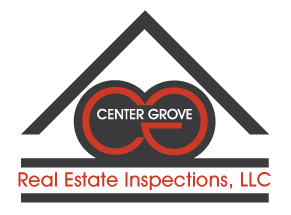Table Of Contents
Roof Considerations | Flooring Issues | Condensate Lines | Chimney Issues | Site Drainage
Roof Considerations:
What are the dark streaks on my roof?
Dark streaks on your roof are algae growth. This typically shows on the north or east exposures of the roof surface that stay cooler and more damp than the sun exposed surfaces. These streaks are also an indication that the roof is beginning to approach its latter stages of useful life. As the algae grows, it begins to harden the shingle, making it brittle and more susceptible to damage. This damage will show up as granule loss, which will then expose the mat of the shingle to more heat and weather. Over time, the degradation of the roof will accelerate. Roofs like this should be monitored biannually to find necessary repairs and to best determine the point of eventual replacement.
Flooring Issues:
A home I am looking at for purchase has a slope under the laminate floor as it enters the bathroom. Any ideas?
I may have seen the actual home or at least one like it. The laminate flooring was installed with a pad underneath. In order to avoid a difference in height at the bath entrance, which would have created a trip hazard and appearance issue, the installer held the pad back about a foot to create an easy transition into the bathroom. Under these circumstances, it was probably the best decision.
Condensate Lines:
My inspector found a condensate drain line terminated in the crawlspace. He didn’t explain much more about it. Can you fill me in on this issue?
A condensate line from the air conditioner or high efficiency furnace draining into the crawlspace contributes to the moisture in the crawlspace. A properly ventilated crawlspace is designed to be as low in moisture content as possible. As you can see, the uninsulated main trunk of the air handling system is condensating due to the moisture available. The drain should be properly terminated to the sewer drain of the home using a trap and allowing a 1” gap between the top of the trap and condensate pipe.
There is actually two issues in this photo that are somewhat related to the condensate drain. The cold duct is allowing condensation to develop on the outside and likely on the inside. This will eventually rust the ductwork. The condensation on the inside of the duct will also contribute to the humidity level in the home, which is trying to be reduced with the air conditioner.
In addition, this photo is a great storyteller of the fact that ducts under the home should be insulated. In today’s energy conscious environment, it should be understood that as much as 30% of the home’s heating or cooling efficiency can be lost through uninsulated ducts.
Chimney Issues:
Where are the rust stains coming from on my chimney?
It is likely that your chimney chase cap looks like this. As it rusts the discoloration appears as it runs down the sides of the chimney. I suggest painting this cap as a preventive maintenance measure.
Site Drainage:
Why does it really matter to have the downspouts directed away from the home?
Downspouts are a major contributor to water intrusion into a crawlspace or basement. The water seeks the path of least resistance as gravity takes it downward.
Understand this - a roof of 1200 square feet sheds approximately 750 gallons of water in a 1 inch rain. If this water is allowed to stand near the foundation, it will likely be found in places where you don’t want it to be.
If these downspouts are not diverted at least 5-8 feet from the home, the water will eventually affect the dirt supporting the footer of the foundation and allow the dirt to shrink. This shrinkage will allow the foundation to settle and crack.
Take advantage of the best preventive maintenance practice available for home upkeep. Install yard drains to carry the downspout water at least 5-8 feet from home
